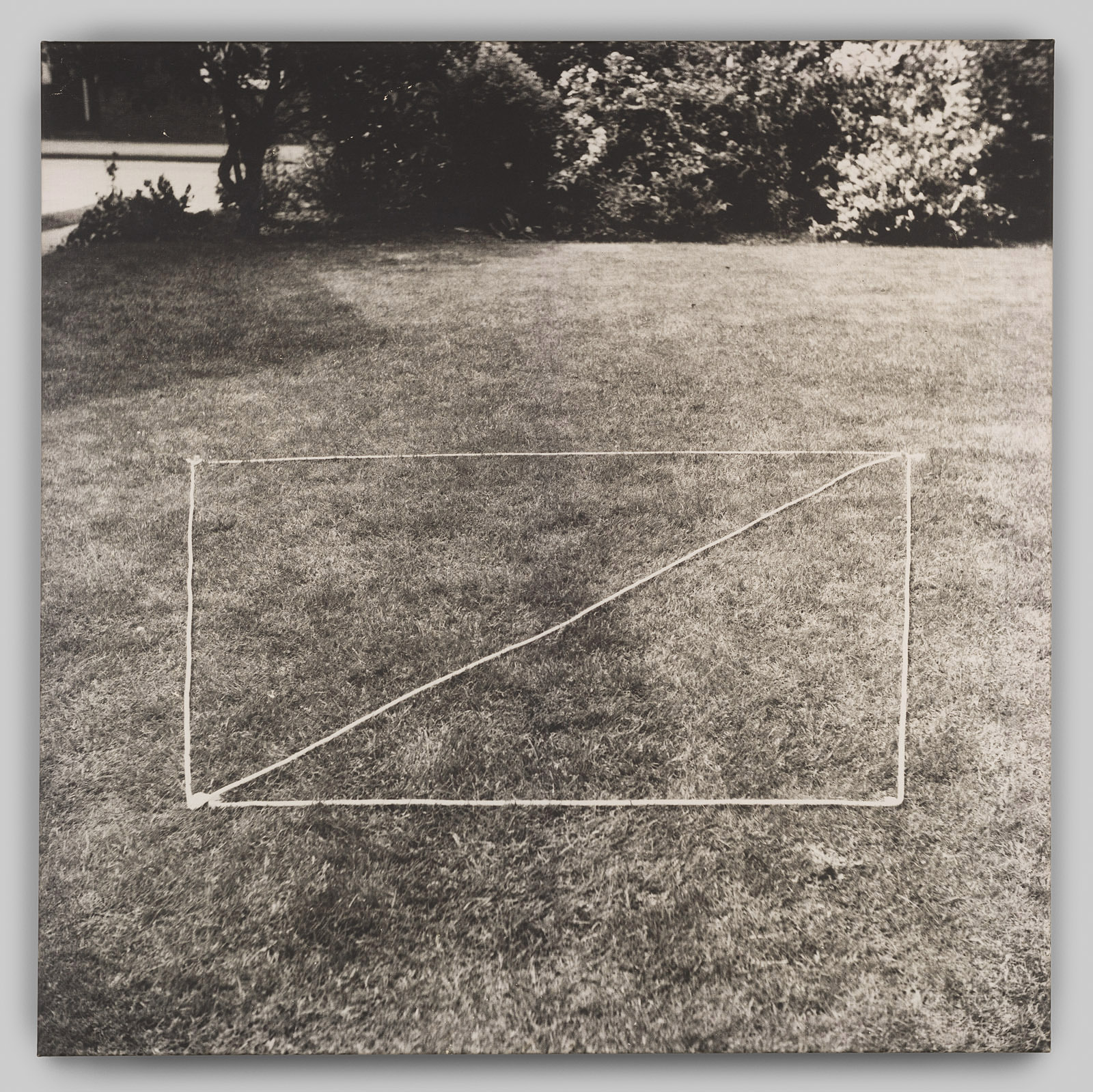
Spatial illusion
Jan Dibbets’s first Perspectiefcorrecties (perspective corrections) were made at the end of the 1960s. Perspectiefcorrectie – rechthoek met 1 diagonaal (Perspective corrective – right angle with one diagonal) is one of the famous examples of this work. To create it, Dibbets lays a white rope in the shape of a trapezium with a diagonal on a lawn and takes a monochrome picture of it. The viewer sees and experiences the space of the lawn according to the laws of perspective but sees the trapezoid as a rectangle. The spatial illusion that Dibbets creates raises the question of the role of photography and what the viewer sees when they look at the image.
Faded lines
Dibbets also plays the game with central perspective in his film Verticaal, horizontaal, diagonaal, vierkant (Vertical, horizontal, diagonal, square), which Dibbets made especially for Sonsbeek buiten de perken (Sonsbeek outside the boundaries). The film starts with a graphic pattern of white lines on a lawn. The horizontal and vertical lines follow the frame of the lens, while two diagonals accentuate the square shape. When the pattern disappears, the artist gets into the picture himself. Dibbets walks along the faded lines with the precision of a tightrope walker. He crosses the lawn from bottom left to top right and moves across the image from bottom to top, thus emphasizing the way in which the camera lens distorts the perspective.
